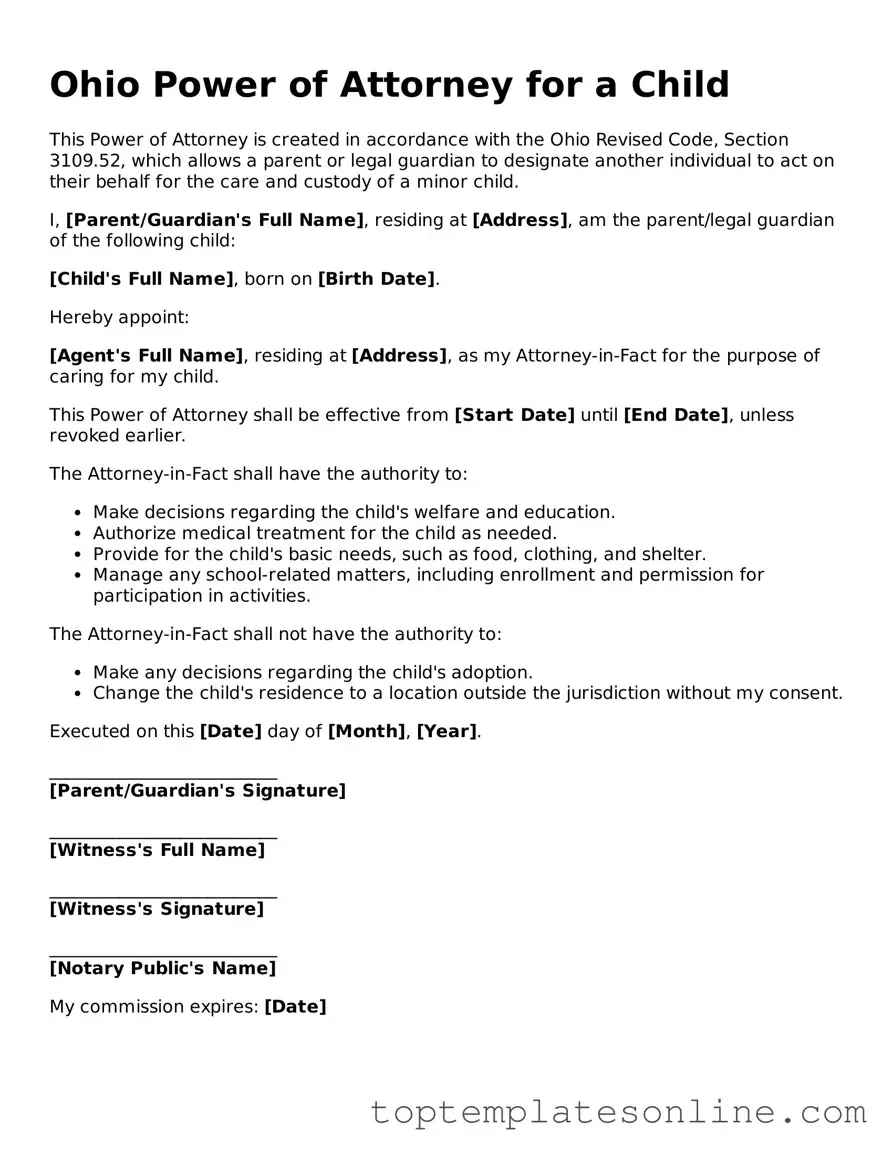In Ohio, the Power of Attorney for a Child form serves as a vital legal tool for parents or guardians who need to delegate authority regarding the care and custody of their child. This form allows an adult, often a relative or trusted family friend, to make important decisions on behalf of the child, ensuring their well-being when the parent or legal guardian is unavailable. The document encompasses various responsibilities, including making medical decisions, managing educational needs, and overseeing day-to-day care. It is crucial for parents to understand that this power is temporary and can be revoked at any time, providing peace of mind while ensuring that the child’s needs are met. The form must be completed with specific details, such as the duration of the power granted and the identity of the designated agent. Additionally, notarization is typically required to validate the document, adding an extra layer of security. By utilizing this form, parents can ensure that their child receives appropriate care and attention, even in their absence.
